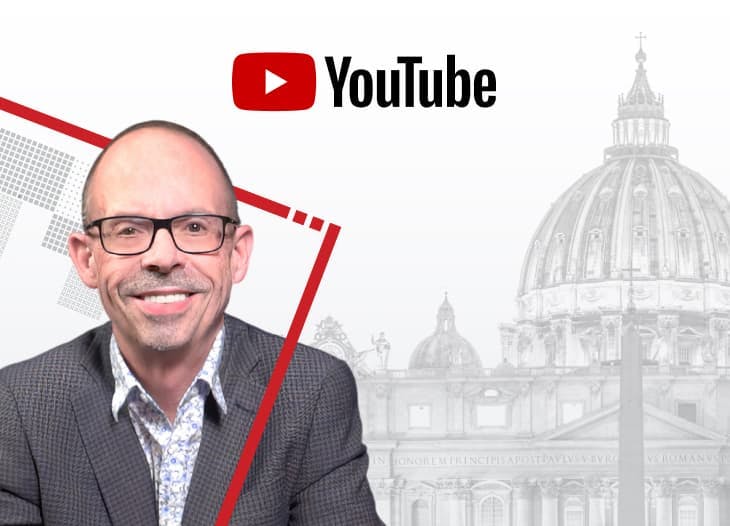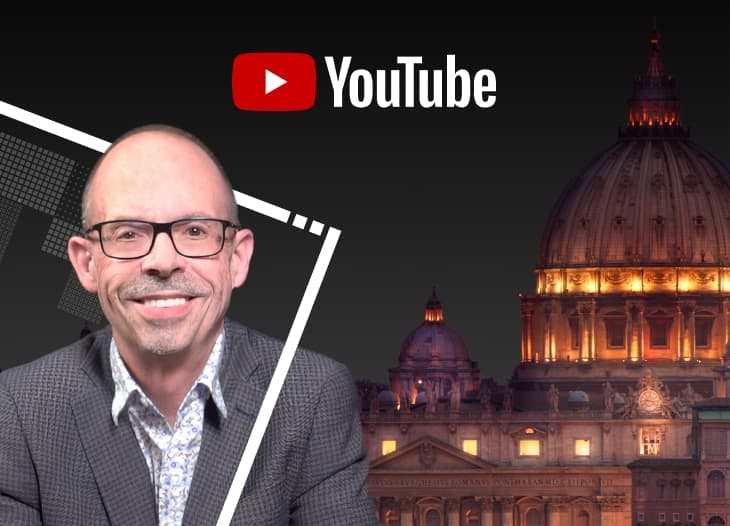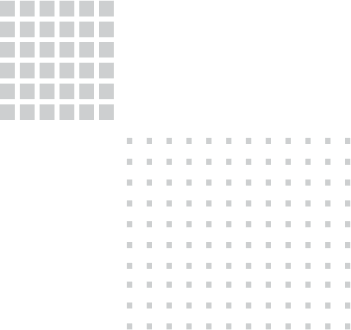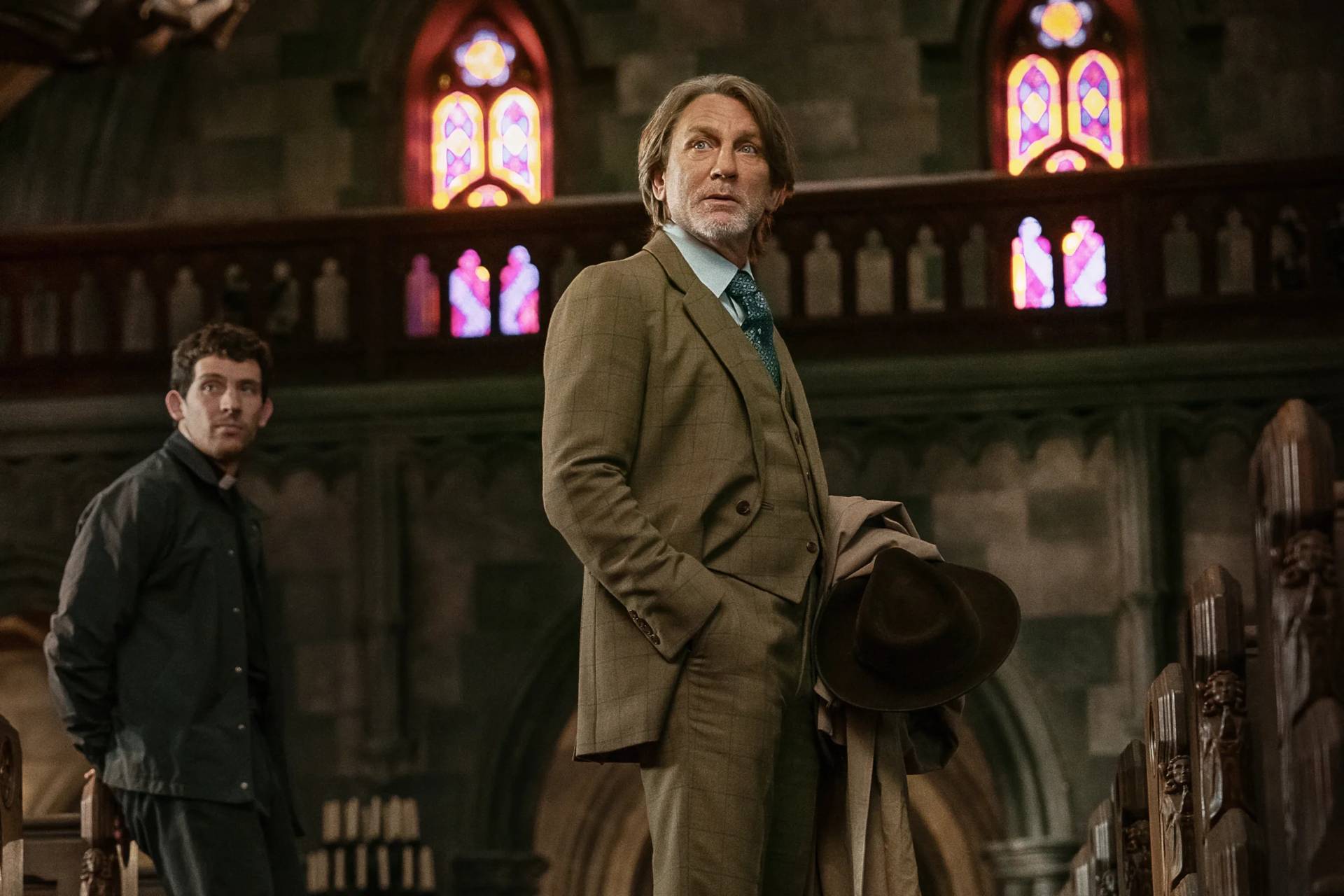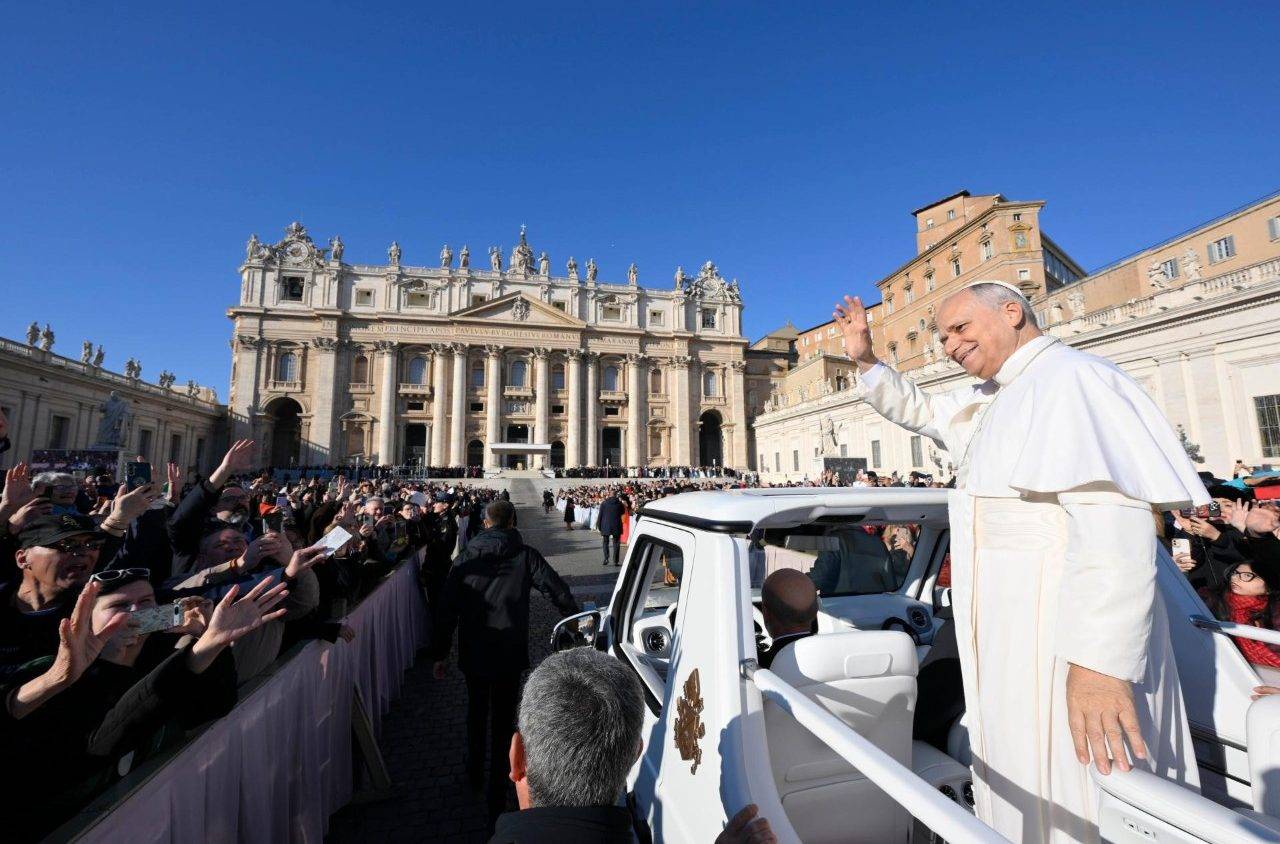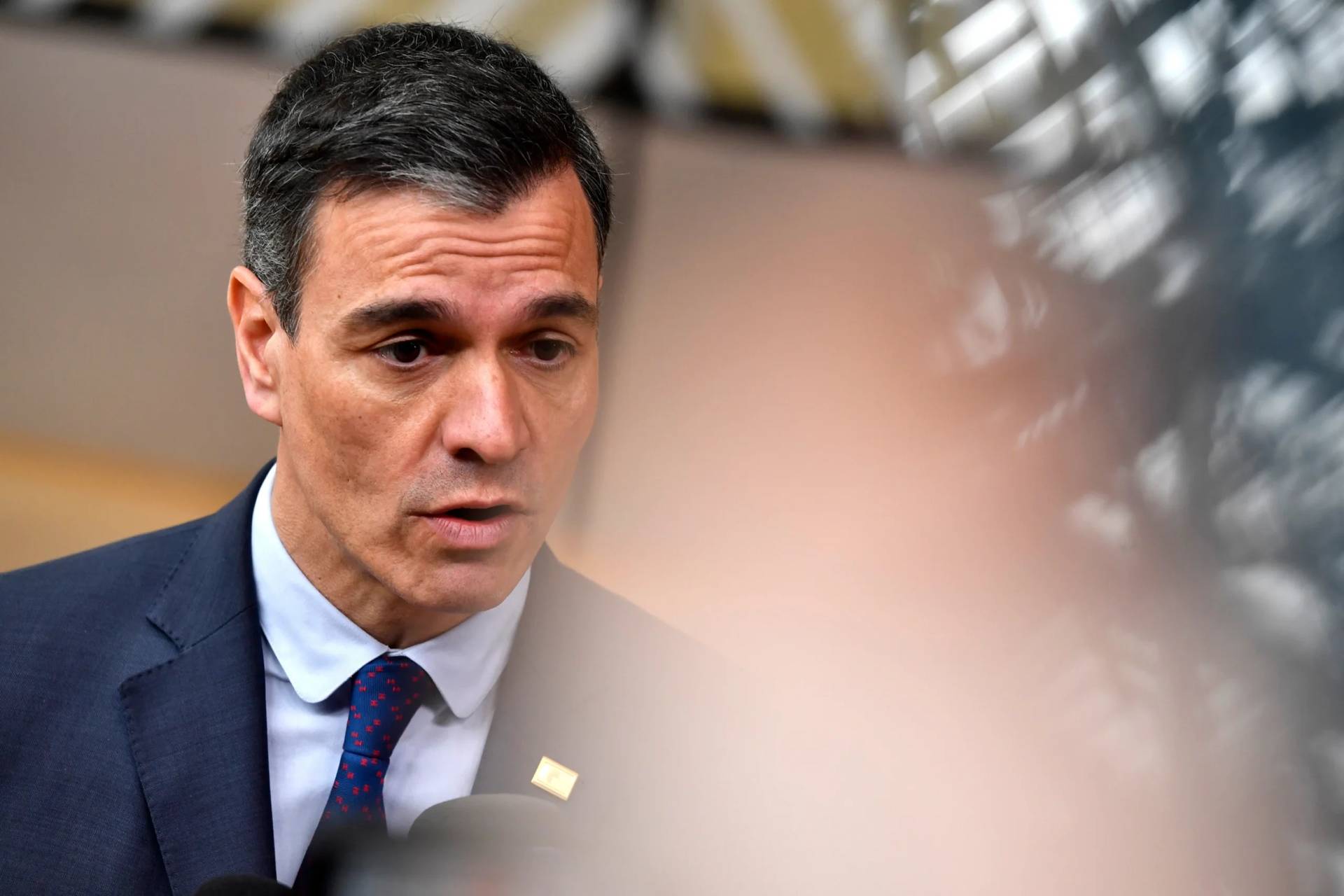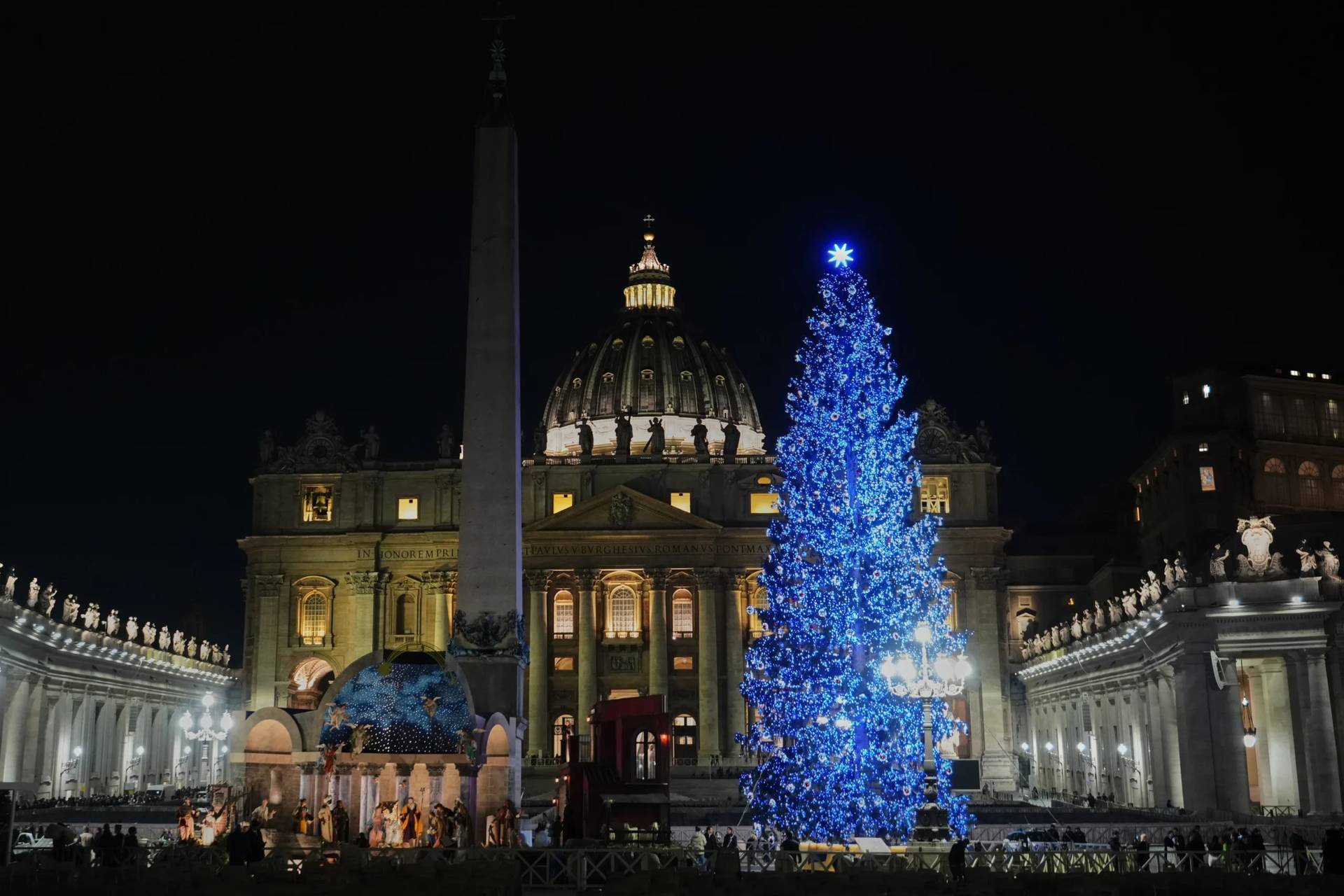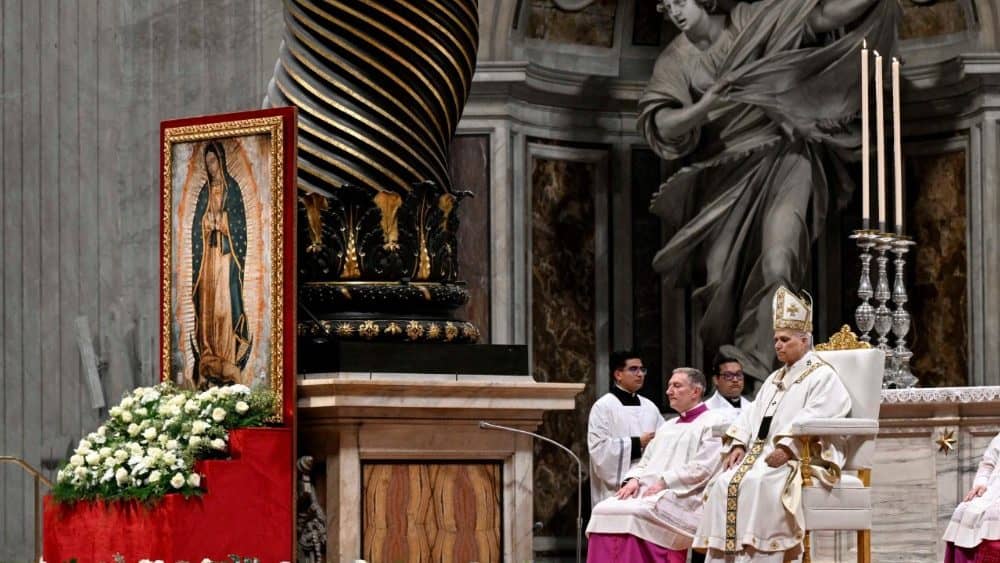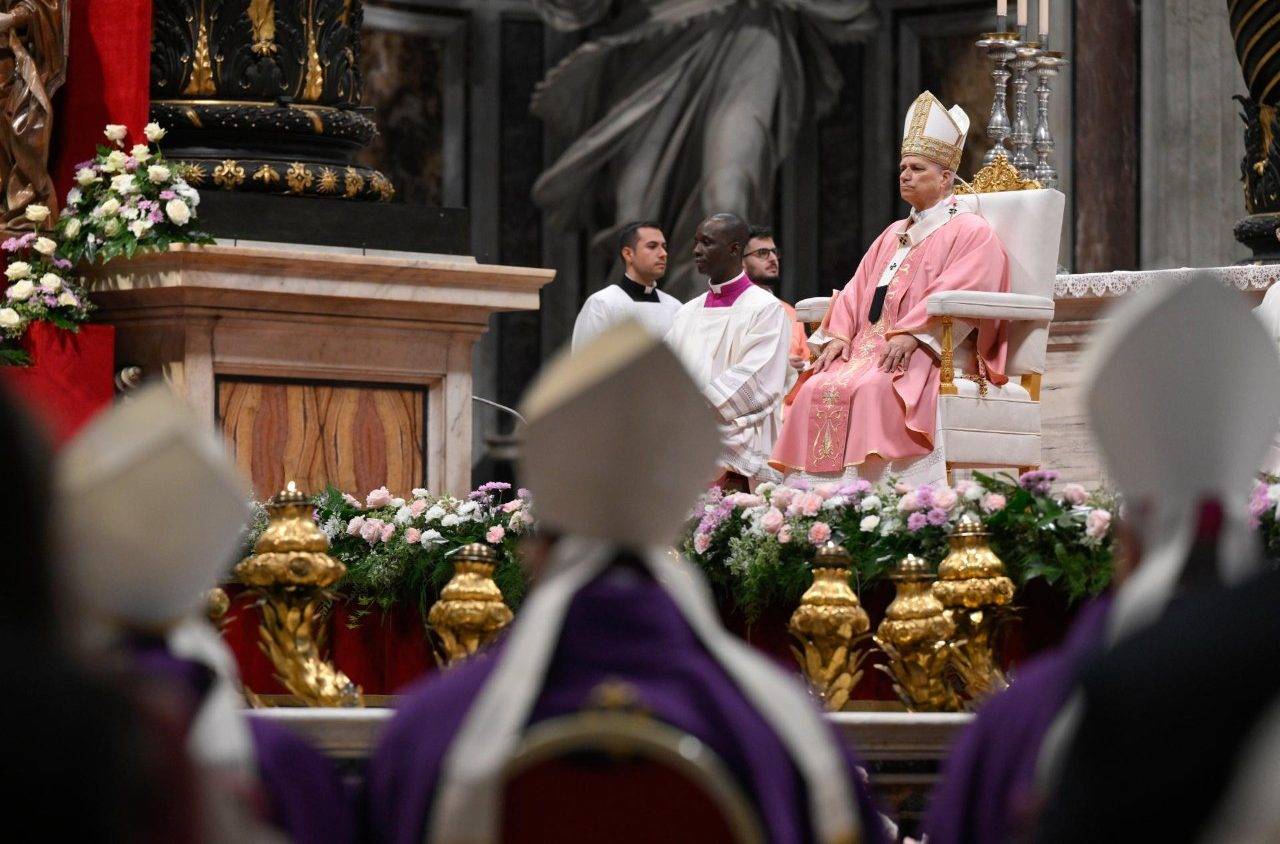Images of artwork created by a disgraced celebrity cleric accused of serial sexual and other abuse have disappeared from official Vatican Media websites without explanation, almost a year after the head of the Vatican’s communications outfit strongly defended his department’s continued use of the images even in the face of sustained public outcry.
Victims and advocates received the news with cautious favor, but the development highlights how far the Vatican and the Church have to go toward real reform of safeguarding culture and the ecclesiastical justice system.
“Rape Art”
The offending images were digital reproductions of works created by Father Marko Rupnik – a former Jesuit accused of spiritually, psychologically, and sexually abusing dozens of victims over a period of thirty years – for much of which time Rupnik was based in Rome.
For decades, Rupnik enjoyed the favor of popes, Vatican officials, and his erstwhile superiors in the Society of Jesus.
Most of Rupnik’s alleged victims were women religious, several of whom belonged at one time to a congregation of sisters Rupnik himself had helped to establish in his native Slovenia.
Rupnik allegedly abused his victims as part of his “creative process” – a fact survivors, victim-advocates, and observers from across the spectrum of opinion in the Church say makes Rupnik’s abuse inseparable from his “art” works, which are found in shrines and chapels all over the world and even in the Apostolic Palace.
Some victims and advocates have called Rupnik’s work “rape art” and many have called for its removal from sacred space.
Laura Sgrò, a lawyer who practices in both the civil and ecclesiastical spheres and is representing a number of Rupnik’s victims both civilly and canonically, told Crux the removal of the Rupnik images from the Vatican News website is a welcome development.
“My clients received the news with favor,” Sgrò said. One of Rupnik’s victim-accusers, Mirjam Kovacs, told Crux she saw the development as “an encouraging sign.”
“The use of such images was repeatedly decried by the victims I represent,” Sgrò said, “who considered their use to be inopportune at the very least, inasmuch as they were a source of ulterior pain for my clients.”
Images quietly removed
As late as Saturday afternoon in the U.S., the artwork in question had still been visible on the official Vatican News liturgical calendar pages, including those for several feasts in the current month of June 2025.
That the images would ever have been removed was far from a sure thing until it became a fait accompli, and in fact their presence was a matter of stated policy, notwithstanding persistent global protest against the Vatican’s use of them.
“We’re not talking about abuse of minors,” the Prefect of the Dicastery for Communication of the Holy See, Dr. Paolo Ruffini, told a banquet hall filled with journalists in June of 2024, in response to a question about his department’s continued use of Rupnik images. “We did not put any new photos,” Ruffini said, “we just left what [images] there were.”
Ruffini took the questions after he had delivered the keynote address on the final day of the 2024 Catholic Media Conference, the premier annual event of the Catholic Media Association in the United States.
RELATED: Rupnik case casts shadow on Vatican’s commitment to fight abuse
Calls from victims and reform advocates intensified in the wake of Ruffini’s remarks, not only for the removal of the images but for Ruffini’s resignation or dismissal. Ruffini, however, remained in his place and so did the Rupnik images, until the images disappeared sometime over the weekend.
Among those who called for the use of the Rupnik images to cease was the founding president of Pope Francis’s own Commission for the Protection of Minors, Cardinal Sean O’Malley, who issued a statement a week after Ruffini offered his defense to journalists.
“[P]astoral prudence would prevent displaying artwork in a way that could imply either exoneration or a subtle defense,” of alleged abusers, “or indicate indifference to the pain and suffering of so many victims of abuse,” O’Malley wrote in a letter addressed to Vatican department heads in the wake of the controversy.
No explanation – Justice delayed
On Sunday, after learning of the images’ removal, Crux asked the Vatican’s press office director, Matteo Bruni, to say who ordered the change and for how long it had been in the works. Crux also asked Bruni to explain what sense is to be made of the decision, which appears to be a complete policy reversal. Those questions were without reply at time of publishing.
Observers have already noted, however, that the removal of the Rupnik images came hot on the heels of Pope Leo’s meeting with O’Malley and officials of the Commission for the Protection of Minors, which took place on Thursday of last week.
Speaking on condition of anonymity because they were not authorized to comment, more than one high-ranking official in the Vatican’s sprawling comms apparatus told Crux they had no indication the change would be taking place. Two of them – in different departments – said Crux’s query was the first word the officials had heard of the change.
Victims and advocates told Crux they are hopeful the change should prove a harbinger of more to come.
Sgrò said her clients “place a great deal of trust in Pope Leo XIV,” and are confident Rupnik will speedily face trial.
For a long time, it was not at all certain that Rupnik would ever face justice for his alleged crimes.
Citing the expired statute of limitations, the Vatican originally declined to prosecute Rupnik. Investigators had found copious evidence against the priest.
The case investigators had built included numerous “highly credible” witnesses, as one of the Vatican’s own chief investigators, Bishop Daniele Libanori, described them. The accused was in good health. Nothing appeared to stand in the way of the accused’s right to confront the witnesses against him. There was also precedent for lifting the statutory bar against prosecution.
Rupnik had also been secretly investigated, tried, convicted, and excommunicated for the crime of “absolving an accomplice in a sin against the Sixth Commandment” – Church jargon for the crime a priest commits when he hears the confession of a person with whom he had illicit sexual relations – as recently as 2020.
The secret excommunication was secretly lifted almost as soon as it had been imposed – excommunication is a “medicinal” penalty in Church law, used to obtain expression of remorse and usually lifted as soon as such expression is forthcoming – but the fact of the trial and the conviction remained.
All that notwithstanding, Pope Francis did not lift the statute of limitations.
Pope Francis faced close scrutiny and sustained criticism over the handling of the Rupnik case, and only reversed course after news broke in 2023 that Rupnik – by then expelled from the Jesuits for disobedience (but not for his crimes of abuse) – had been invited by Bishop Jurij Bizjak of Koper to serve as a priest of the diocese in Rupnik’s native Slovenia.
That development ignited incandescent worldwide outrage, after which the Vatican announced Pope Francis had received indications of potential mishandling in the Rupnik case and had therefore ordered it reopened.
“In September [of 2023],” the statement of October 27, 2023, from the Vatican press office said, “the Pontifical Commission for the Protection of Minors brought to the Pope’s attention that there were serious problems in the handling of the Father Marko Rupnik case and lack of outreach to victims.”
“Consequently,” the statement continued, “the Holy Father asked the Dicastery for the Doctrine of the Faith to review the case, and decided to lift the statute of limitations to allow a process to take place.”
Justice delayed, again
That was five hundred ninety days ago – the better part of two years – and the Vatican has yet to bring Rupnik to trial.
In March of this year, the head of the Dicastery for the Doctrine of the Faith (DDF), which is overseeing the Rupnik case, Cardinal Victor Manuel Fernández, said his department “must create a tribunal for the process.”
“Now we must find judges,” Fernández said. “We’ve made a list,” he said, adding that his department was searching for judges “with certain characteristics, for something so mediatic.”
One of the Vatican comms officials with whom Crux spoke had a different explanation for the whole affair. Rupnik “was protected by Pope Francis,” the official said – one of those who spoke to Crux on condition of anonymity – adding that “things are changing” under Pope Leo.
“A small but positive step”
Anne Barrett Doyle of Bishop Accountability told Crux she considers the removal of the Rupnik images from the Vatican News website “a small but positive step.”
“Let’s hope this is just the beginning,” Barrett Doyle said. “We urge Pope Leo to order a speedy conclusion to the canonical case against Rupnik,” she said, calling the delay in justice for Rupnik “both cruel and unnecessary.”
“Rupnik should be removed from the priesthood,” Barrett Doyle said, “and the pope should publicly sanction his enablers in the curia, the diocese of Rome, the Jesuits, and the Slovenian church.”
“[S]uch decisive action is unlikely,” Barrett Doyle said.
She added, however, that she sees some reason to hope Leo will see the similarities between Rupnik’s alleged pseudo-mystical and psychological manipulation of his victims and “the sadistic abuses perpetrated by the Sodalitium Christianae Vitae,” an abusive Peruvian group suppressed by order of Pope Francis only a week before his death in April of this year.
When he was Cardinal Robert Prevost of the Dicastery for Bishops, Leo reportedly had a significant role in securing the suppression of the Sodalitium, with which he was familiar from his time as a bishop in Peru.
“The removal of Rupnik’s art from the Vatican website is a much-needed corrective to Pope Francis’s baffling reluctance to publicly support Rupnik’s victims,” Barrett Doyle also said, noting how Francis continued to allow the display of Rupnik’s art not only on official Vatican digital platforms but also as background to some of the pope’s own videotaped remarks from his own personal living quarters.
That was a reference to Pope Francis’s use of an actual Rupnik piece in a video message he recorded for participants in a Marian congress in Aparecida, Brazil, in June of 2023, years after gruesomely detailed revelations of Rupnik’s depravities had reached the public.
“These were insensible acts that inflicted more pain on Rupnik’s victims,” Barrett Doyle said.
“It seemed that Francis was signaling sympathy toward the artist and skepticism about his victims’ claims,” she said.
Antonia Sobocki of the UK-based victim advocacy and outreach, LOUDfence, told Crux she also welcomes the removal of the Rupnik images.
“Every time we actively choose to listen to and prioritize those injured by abuse,” Sobocki said, “we are living out the message of the Gospel.”
“We are choosing restorative justice,” Sobocki said. “This is crucial,” she added, “because listening and prioritizing the injuries of those harmed is the first step in a process of healing for the victims but also for the Church as a whole.”
“Healing and reconciliation are not an event but a journey,” Sobocki said. “The removal of the Rupnik graphics from the website is [a] first step and I commend those who took this decision.”
The Vatican has yet to give any details on the decision to remove the Rupnik art images.
“It is good to do the right thing for the right reason,” Sobocki said, “however if this is not where they are, doing the right thing for the wrong reason is still partial progress.”

